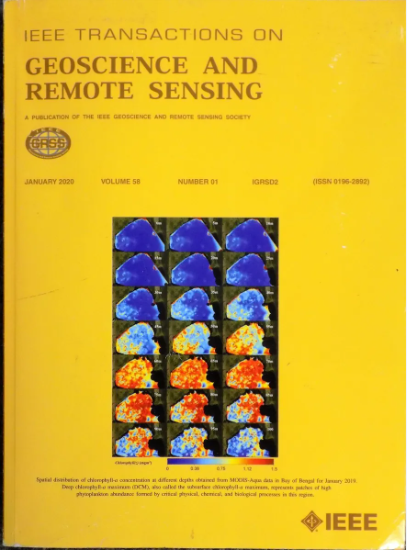Uncertainty of Pure Rotational Raman–Rayleigh LiDAR for Temperature Measurement in Middle-to-Upper Atmosphere: Evaluation Method
IF 7.5
1区 地球科学
Q1 ENGINEERING, ELECTRICAL & ELECTRONIC
IEEE Transactions on Geoscience and Remote Sensing
Pub Date : 2024-09-11
DOI:10.1109/TGRS.2024.3458414
引用次数: 0
Abstract
This article constitutes the second installment in a series dedicated to exploring the uncertainties associated with pure rotational Raman–Rayleigh temperature measurement LiDARs in the middle-to-upper atmosphere (20–90 km). It presents uncertainty evaluation methods aimed at addressing the challenge of uncertainty assessment. These methods leverage both the Guide to the Expression of Uncertainty in Measurement (GUM) method and the Monte Carlo method (MCM) to ascertain the uncertainty of air density and temperature derived from LiDAR signals. Within the framework of these evaluation methods, various uncertainty sources are considered, encompassing saturation correction, photon noise, background noise, reference temperature, and two special uncertainty sources: atmospheric transmittance correction in Rayleigh LiDAR and the calibration process in Raman LiDAR. An uncertainty evaluation example in accordance with the proposed evaluation method is provided by employing raw signals from full-chain simulation system introduced in another series paper. In this example, we compare the evaluation results of the GUM method with those derived from the MCM. Our findings reveal consistent trends in different uncertainty components between the two methods. In addition, the uncertainty caused by atmospheric transmittance correction is involved with detailed considerations of correlation and iterative methods. The uncertainty resulting from the calibration process in Raman LiDAR, attributed to its nonlinear characteristics, can only be evaluated using the MCM. These findings affirm the applicability of the proposed uncertainty evaluation methods of pure rotational Raman–Rayleigh LiDAR. This research enhances our understanding of the sources of uncertainty in LiDAR systems and provides a convenient approach for evaluating the data quality of temperature LiDAR.用于中高层大气温度测量的纯旋转拉曼-雷利激光雷达的不确定性:评估方法
本文是探索中高层大气(20-90 公里)纯旋转拉曼-瑞利温度测量激光雷达相关不确定性的系列文章的第二篇。它介绍了旨在应对不确定性评估挑战的不确定性评估方法。这些方法利用《测量不确定性表达指南》(GUM)方法和蒙特卡洛方法(MCM)来确定从激光雷达信号得出的空气密度和温度的不确定性。在这些评估方法的框架内,考虑了各种不确定性来源,包括饱和校正、光子噪声、背景噪声、参考温度以及两个特殊的不确定性来源:瑞利激光雷达中的大气透射率校正和拉曼激光雷达中的校准过程。通过使用另一篇系列论文中介绍的全链模拟系统的原始信号,我们提供了一个与所提出的评估方法相符的不确定性评估示例。在这个例子中,我们比较了 GUM 方法与 MCM 得出的评估结果。我们的研究结果表明,这两种方法在不同的不确定性成分方面趋势一致。此外,大气透射率校正引起的不确定性还涉及相关性和迭代法的详细考虑。拉曼激光雷达校准过程中产生的不确定性归因于其非线性特征,只能使用 MCM 进行评估。这些发现肯定了所提出的纯旋转拉曼-雷利激光雷达不确定性评估方法的适用性。这项研究加深了我们对激光雷达系统不确定性来源的理解,并为评估温度激光雷达的数据质量提供了便捷的方法。
本文章由计算机程序翻译,如有差异,请以英文原文为准。
求助全文
约1分钟内获得全文
求助全文
来源期刊

IEEE Transactions on Geoscience and Remote Sensing
工程技术-地球化学与地球物理
CiteScore
11.50
自引率
28.00%
发文量
1912
审稿时长
4.0 months
期刊介绍:
IEEE Transactions on Geoscience and Remote Sensing (TGRS) is a monthly publication that focuses on the theory, concepts, and techniques of science and engineering as applied to sensing the land, oceans, atmosphere, and space; and the processing, interpretation, and dissemination of this information.
 求助内容:
求助内容: 应助结果提醒方式:
应助结果提醒方式:


